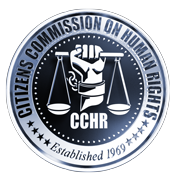Psychiatry: Hooking Your World on Drugs
Introduction
What is one of the most destructive things in your world today?
If you answered drugs, then you share that view with the majority of people in your community. Illegal drugs, and their resultant violence and crime, are recognized as a major threat to children and society. However, very few people recognize that illegal drugs represent only part of the current drug problem. Today, we see a reliance on another type of drug, namely prescription psychiatric drugs.
Once reserved for the mentally disturbed, today it would be difficult to find someone—a family member, a friend or a neighbor—who hasn’t taken some form of psychiatric drug. In fact, these have become such a part of life for many people that “life without drugs” is simply unimaginable.
Prescribed for everything from learning and behavioral problems, to bedwetting, aggression, juvenile delinquency, criminality, drug addiction and smoking, to handling the fears and problems of our elderly, from the cradle to the grave, we are bombarded with information pushing us towards this type of chemical “fix.”
Little surprise then that worldwide statistics show that a rapidly increasing percentage of every age group, from children to the elderly, rely heavily and routinely on these drugs in their daily lives. Global sales of antidepressants, stimulants, antianxiety and antipsychotic drugs have reached more than $76 billion a year—more than double the annual US government budget spent on the war against drugs.
Authors Richard Hughes and Robert Brewin, in their book, The Tranquilizing of America, warned that although psychotropic drugs may appear “to ‘take the edge off’ anxiety, pain, and stress, they also take the edge off life itself…these pills not only numb the pain but numb the whole mind.” In fact, close study reveals that none of them can cure, all have horrific side effects, and due to their addictive and psychotropic (mind-altering) properties, all are capable of ruining a person’s life.
Consider also the fact that terrorists have used psychotropic drugs to brainwash young men to become suicide bombers. At least 250,000 children worldwide, some as young as seven, are being used for terrorist and revolutionary activities and given amphetamines and tranquilizers to go on “murderous binges” for days. Yet these are the same drugs that psychiatrists are prescribing children for “learning” or “behavioral” problems.
Understanding society’s skyrocketing psychiatric drug usage is now even more critical than ever. Internationally, 54 million people are taking antidepressants known to cause addiction, violent and homicidal behavior.
How did millions become hooked on such destructive drugs? We need to look earlier than the drug.
Before falling into the trap, each individual was convinced that these drugs would help him or her to handle life. The primary sales tool used was an invented diagnostic system, the American Psychiatric Association’s Diagnostic and Statistical Manual of Mental Disorders IV (DSM) and the mental disorders section of Europe’s International Classification of Diseases (ICD). Once diagnosed and the prescription filled, the harmful properties of the drugs themselves took over.
Forcing widespread implementation of this diagnostic sham, psychiatrists have ensured that more and more people with no serious mental problem, even no problem at all, are being deceived into thinking that the best answer to life’s many routine difficulties and challenges lies with the “latest and greatest” psychiatric drug.
Whether you are a legislator, a parent of school-aged children, a teacher, an employer or employee, a homeowner, or simply a community member, this report is vital reading.
Our failure in the war against drugs is due largely to our failure to put a stop to the most damaging of all drug pushers in society.
This is the psychiatrist at work today, busy deceiving us and hooking our world on drugs.
Sincerely,

Jan Eastgate
President
Citizens Commission
on Human Rights International







